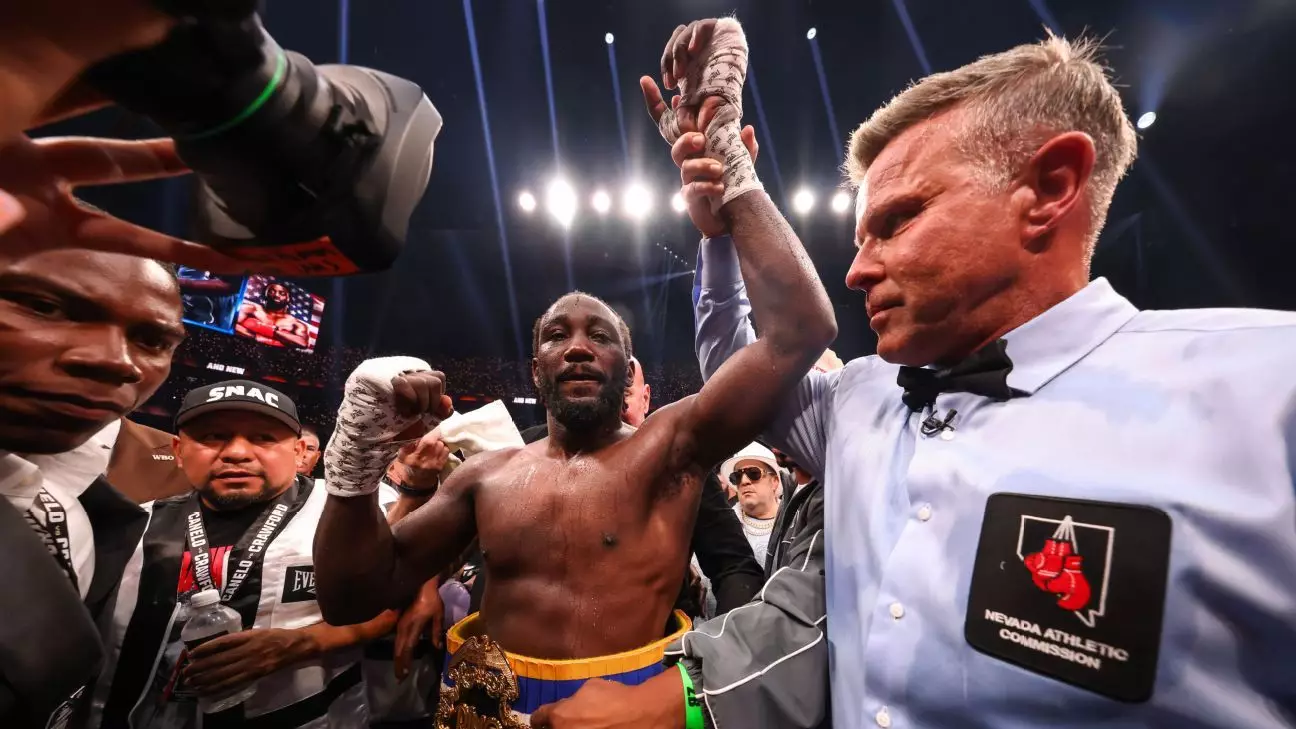The recent exchange between boxing champion Terence Crawford and UFC star Ilia Topuria exemplifies a broader shift in combat sports—an increasing willingness to blur traditional boundaries. Historically, boxing and MMA have operated as separate spheres, each with its own loyal fanbase and set of unspoken rules. However, in the age of social media and relentless self-promotion, fighters from diverse disciplines are viewing crossover opportunities as not just feasible, but essential to their personal brands. Topuria’s desire to challenge Crawford, despite the notable differences in their combat backgrounds, underscores a compelling trend: fighters are becoming more ambitious than ever, eager to test themselves and expand their influence beyond their original spheres.
This phenomenon reveals a fundamental change in how fighters perceive legacy and fame. It’s no longer enough to dominate within one sport; fighters want to forge their names across multiple disciplines, leveraging cross-promotion to maximize exposure and earnings. The Crawford-Topuria saga is thus emblematic of a strategic evolution, where the boundaries of sport are porous, and the ultimate goal is to create a spectacle that captures global attention.
Why Cross-Discipline Fights Are a Double-Edged Sword
While the concept of MMA fighters transitioning into boxing or vice versa might seem lucrative or exciting, critics often caution about the risks and mismatched skill sets that come with it. Crawford’s dismissive attitude toward Topuria’s challenge reflects this skepticism. He questions the legitimacy of a fighter who has never formally competed in boxing—despite the allure of the fight and Topuria’s confident assertions.
Yet, from a strategic perspective, the crossover appeal serves multiple functions. For fighters like Topuria, it’s a pathway to elevate their profile, potentially access higher paydays, and challenge the dominance of established champions. For promoters, it’s an opportunity to generate unprecedented buzz, combining fanbases that might normally never intersect. However, this blending often risks undermining the integrity of the sports themselves; mismatched fights can result in dangerous situations and dilute the meaning of titles.
In Crawford’s case, his reaction highlights an important moral stand: he refuses to chase fights that do not make sense within the realm of boxing’s standards. His dismissiveness can also be read as a safeguard against the chaotic nature of cross-sport matchups, protecting both his reputation and the sport’s credibility from potential exploitation or mismatched fights that benefit only short-term pay-per-view numbers.
The Business of Combat: Fame, Money, and Authenticity
In the modern combat sports landscape, money and fame often trump the pursuit of pure athletic competition. Topuria’s social media bravado and Crawford’s sharp responses reflect an underlying race for visibility. Fighters recognize that in the digital age, a single viral controversy can significantly boost followers, sell more pay-per-view events, and create lucrative endorsement deals.
Yet, this constant chase for attention risks commodifying the sport, reducing it to spectacle rather than skill. Despite the revenue potential, Crawford’s skepticism towards fights with MMA fighters like Topuria underscores a desire to preserve boxing’s integrity. He questions what financial or competitive gain such a matchup could offer when the skill sets are misaligned.
Moreover, Crawford’s critique of Topuria’s lack of familiarity with his fights and his apparent opportunistic comments reveal a deeper issue: authenticity. Combat sports enthusiasts value fighters who show genuine respect for their discipline and recognize its unique demands. When fighters from other disciplines enter the fray with bravado driven more by social media clout than respect for the sport, it risks alienating traditional fans and eroding the sport’s core values.
Cross-Pollination: The Future or a Flare-Up?
Despite criticisms, crossover fights will likely become more prevalent in the coming years. The high-profile Mayweather-McGregor bout demonstrated that combining fighters from different worlds can draw massive audiences. However, such events must be carefully managed to protect athlete safety, preserve competitive integrity, and maintain fans’ trust.
In the end, the rivalry between Crawford and Topuria reflects more than just personal animosity; it symbolizes an ongoing tension between tradition and innovation within combat sports. Whether these cross-discipline challenges serve to elevate the sport or muddle their identities depends largely on how they are marketed and executed. If handled responsibly, they can inspire a new generation of fighters to aim higher, push boundaries, and redefine what it means to be a champion in the 21st century.

